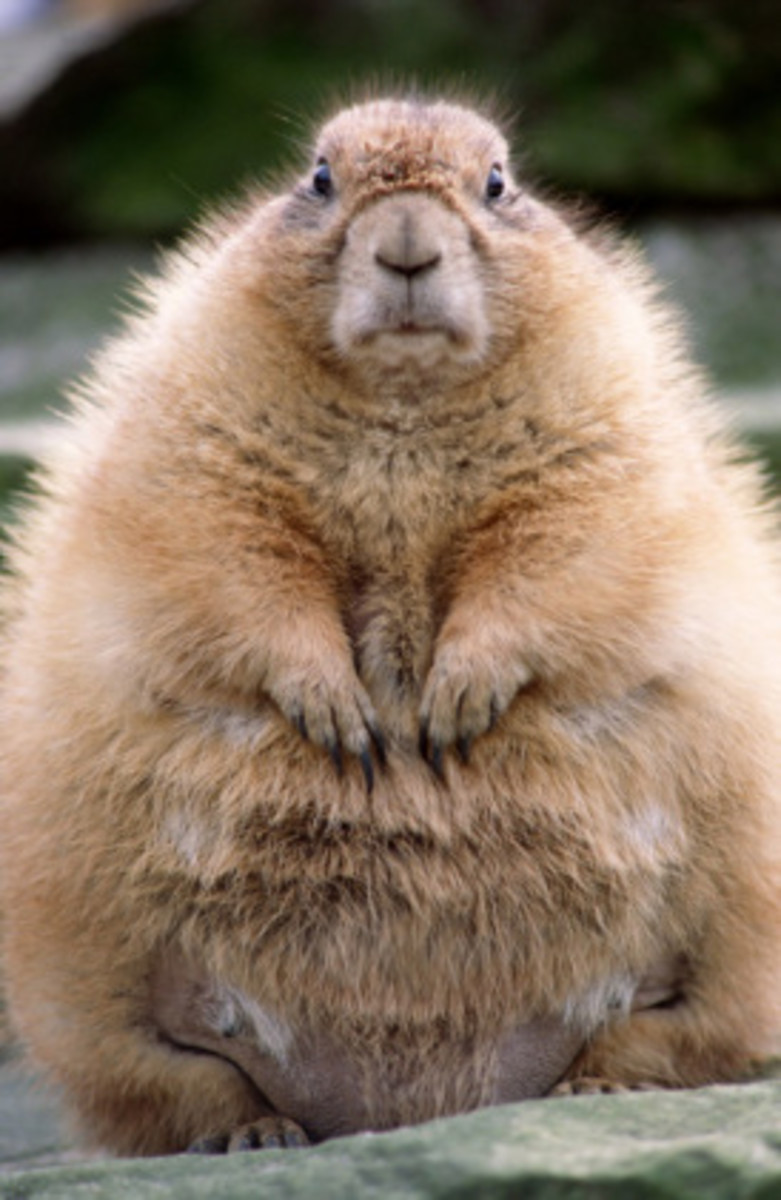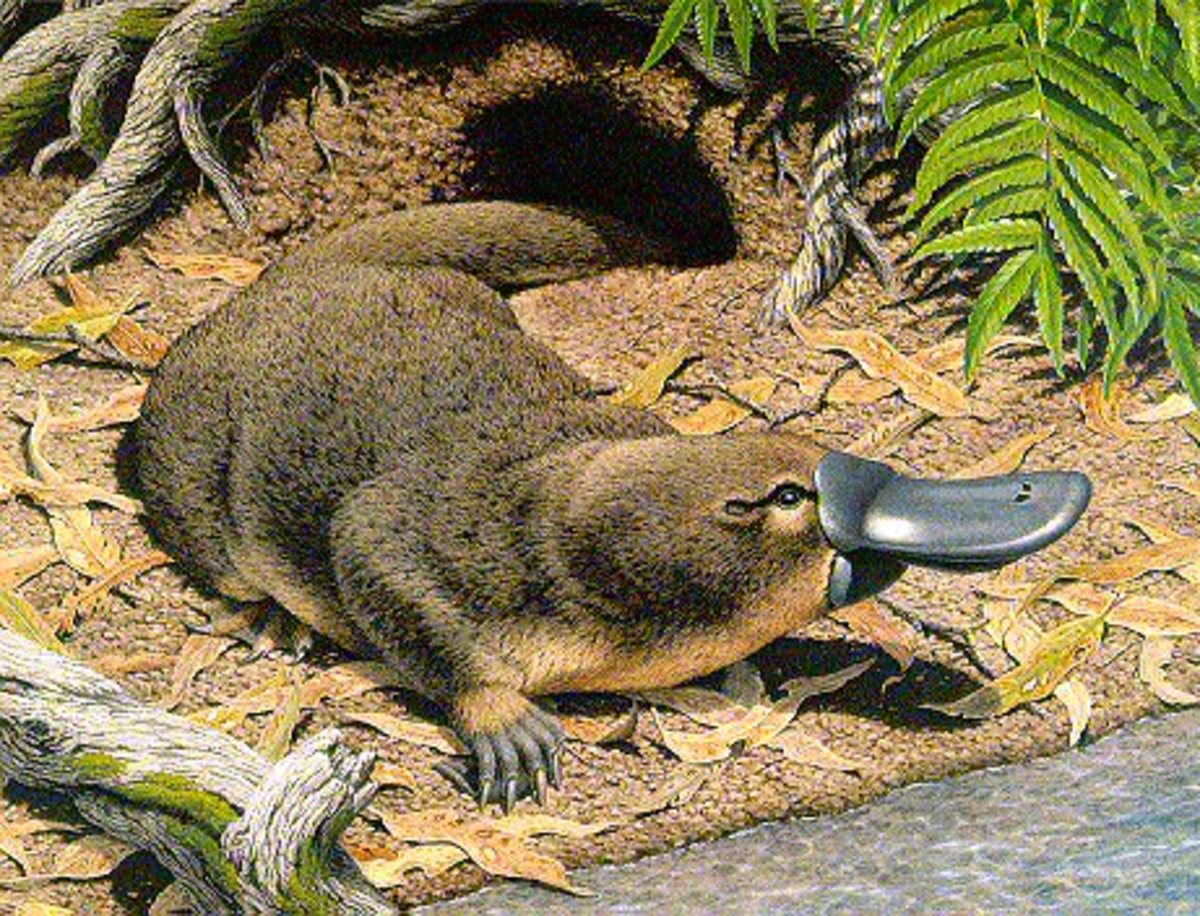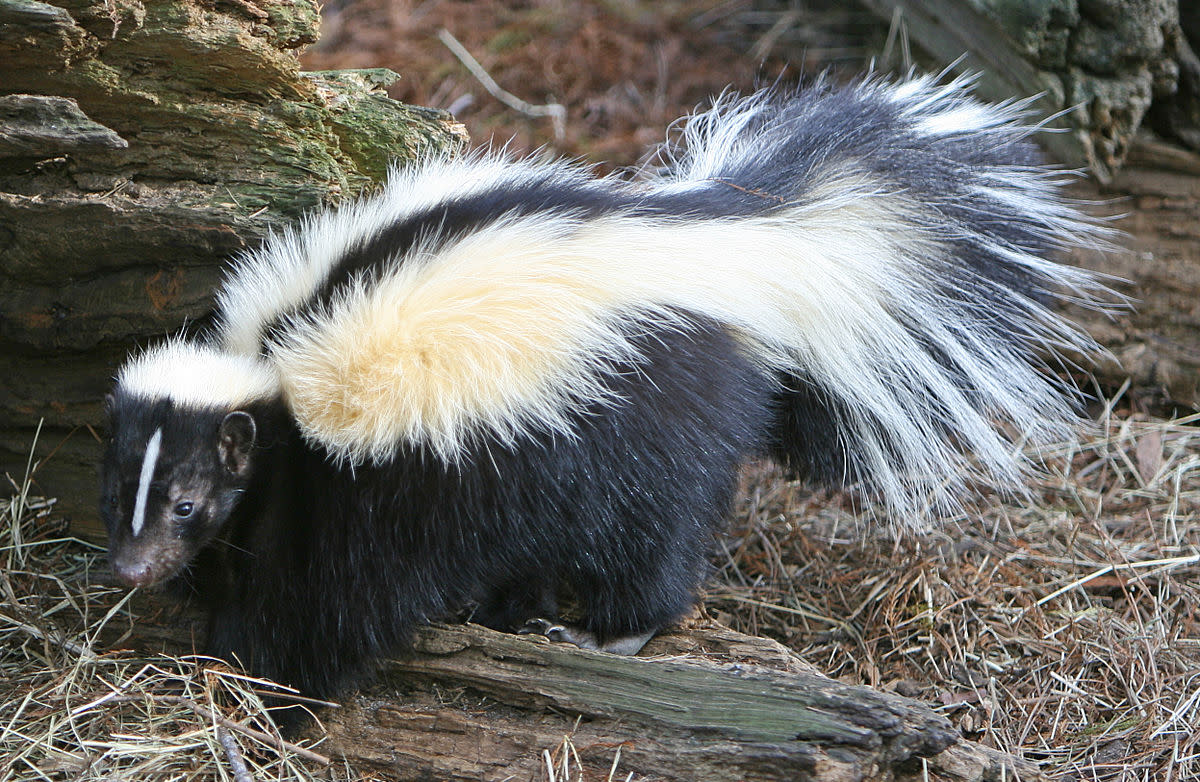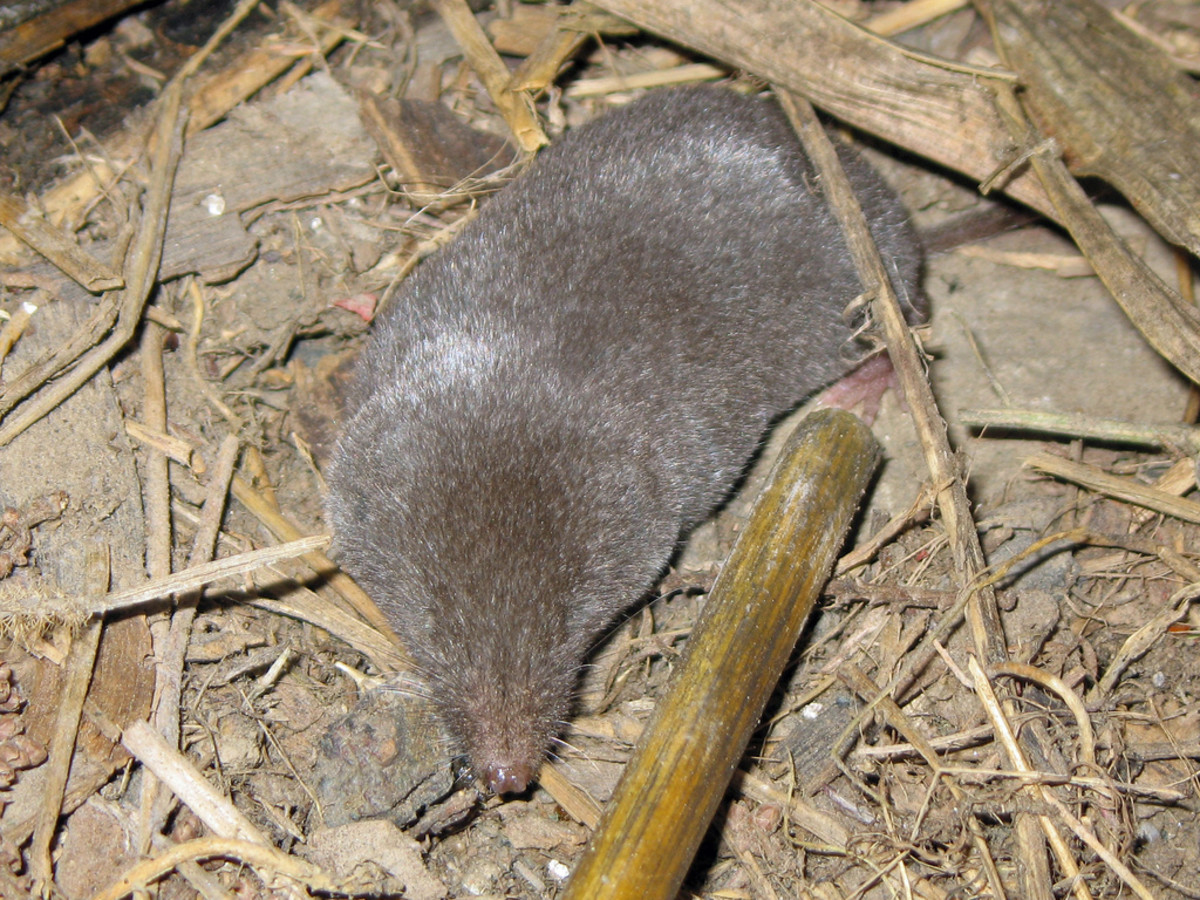Mammals That Lay Eggs - Part 1 - Duckbills
All animals (or almost all) begin life the same way, as an egg-cell formed by the union of cells from two parents.
This egg cell may develop in the mother's body, nourished and protected by her, as in most mammals, or it may be made up into a package with all the food material it will need to develop and pass out of the mother's body as an egg.
In this case it is hatched by the heat of the sun or kept warm by the mother. Of all the mammals living in this world today, only those of one order, the Monotremata (found in Australia, Tasmania, and New Guinea, lay eggs.
When this fact of egg laying mammals was first reported, it was not believed by scientists. So many strange tales turn out to be false that it is best to accept sotries only after careful study of the evidence.
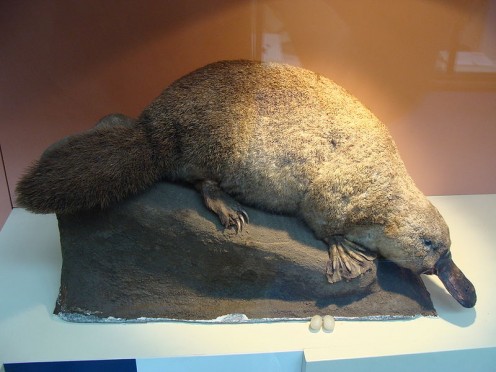
Duckbills
In 1884, however, a scientists named Caldwell went to Australia from England, especially to gather fully reliable information about the duck bill and echidna, or spiny ant-eater, two types that belong in this strange order.
He discovered beyond shadow of doubt that both really do lay eggs. And after the eggs have hatched, the mother feeds her babies with milk, as other mammal mothers do.
Since then, although this creature is delicate and very hard to keep in captivity out of its natural surroundings, a number of duckbills have been kept alive and watched carefully by many people. Anyone who still doubts can go to Australia and see for themselves.
These animals that lay eggs and after the eggs hatch, nourish the young with milk are of two distinct kinds, the:
- Velvet-coated duckbill (Platypus)
- Spiny Anteater
When the first stuffed specimens of the duckbill, or platypus were brought to Europe they were thought to be frauds, like the "mermaids." They had:
- Velvety fur like that of a mole
- Short, flattened tail like that of a beaver
- All four feet webbed
- A bill like a duck
- No teeth
When the collectors reported that the native Australian bush men said this astonishing creature laid eggs like a lizard or turtle, that was going too far! The scientific names the duckbill was given indicate how people felt -- it was first called:
- Platypus anatinus (duck-like flat-foot)
Then it was called:
- Ornithorhynchus paradoxus (which means puzzling bird snout)
And what a curious puzzle the creature was.
The Anatomy Of A Duckbill
The duckbill is a squat, heavy bodied mammal. The males reach more than twenty inches in length and may weigh nearly four pounds, while the females are several inches shorter and a pound lighter in weight.
In color, platypuses are deep, rich brown above, grayish or white below, with the sheen so often seen in the coats of water living mammals.
The limbs are short. Unlike those of most mammals, the upper arm and thigh project at right angles to the body, parallel to the ground, like the limbs of a reptile.
The feet have broad webs which aid in swimming. The webs of the forefeet are especially large, extending far beyond the claws.
Duckbills, at home in the water swim very well indeed, but also walk on land, albeit clumsily.
Males have a long, sharp, horny spur on the heel. This spur is hollow and connects with poison glands in the leg. The duck like bill is covered with blackish, naked skin and, although the young platypus has several teeth, these are lost before the animal becomes adult. In their place are developed horny plates or ridges on the jaws and across the palate. The eyes are small and bright, while the external ear is only a hole. No ear shell, such as mammalian ears usually have, is developed in duckbills.
Duckbills fed on snails, crayfish, earth-worms, water living insects and insect larvae. Most of this food they capture by probing about in the mud at the bottom of the ponds in which they live.
To assist in keep the food caught under water, there are large cheek pouches, like those of the monkeys and some rodents, in which the prey may be stored.
Duckbills can remain under water for six or seven minutes at a time, while humans have to train themselves to stay below for more than one minute. After the pouches are filled, a feeding platypus rises to the surface to eat at leisure the booty it has gathered.
Duckbills are found only in southern and eastern Australia and in Tasmania, where they live in the small rivers, streams, and ponds.
They cannot build dams as the beaver does, so they have to choose water that never goes dry.
Even in places where they are common, duckbills are not often seen, for they come out of their burrows only rarely during the daylight hours.
They are shy animals, especially the old males.If one is alarmed it makes a warning "splash-plunge" in the water and all other duckbills hearing the noise sink below the surface and swim to their burrows or to some distance from the threatened danger.
The home burrows are quite ambitious projects. A long tunnel is dug into the bank of a pond or stram from below the water level, sloping gently upward. This tunnel may extend for as much as fifty feet. It ends in a rounded chamber.
Sometimes several tunnels are dug to the other chambers, and the entrance to one of the tunnels is usually on the bank above the water, hidden among bushes or by grass.
The duckbill is an accomplished digger, even though the webs on the forefeet project beyond the claws. There is a beautiful adaptation here, for the web folds back like a small umbrella into the palm, leaving the sharp claws exposed and ready for the work of digging.
In 1923 six living platypuses were shipped from Australia. Although every care was taken of them, five died before the ship reached San Francisco. The remaining one was sent across the country to the New York Zoological Park. No royalty could have received greater attention during the trip than this new immigrant.
It was carried in a special cage with plenty of fresh water which was renewed at every stopping place. An attendant fed it shrimps and earthworms daily. The little animal -- it was not more than half grown, reached New York and the zoological society paid $1,400 for it.
The young platypus lived only seven weeks in its new home but in that time 175,000 people came to see it. It was on view for only a few hours each day. In spite of every care, it became sluggish and died. Perhaps it could not become accustomed to the new climate, or it may have been too young for the diet of earthworms, beetle grubs and shrimps it was fed. No one at the time knew the reason for the death.
Jack And Jill Platypus
After that several duckbills were kept for longer periods in zoos in Australia. At the Badger Creek Platypus Sanctuary, near Melbourne, a pair lived for more than six years in a miniature pond and bank.
The female, called Jill, was found when very young and, probably because of this, became extraordinarily tame. She had no fear of the crowds that came to see her and submitted to handling by her keeper without protest. Her mate, Jack, while he took no food from the hands of the attendant, was not nearly as friendly.
During the colder weather (in Australia, that is between April and mid-September), Jill would disappear for a few days at a time hibernating. She would block up with balls of mud the burrow that led to her sleeping chambers. After such long sleeps she would come out hungry, feeding in the daytime as well as by night to make up for lost time.
Jack, however, never showed any inclination to hibernate and would come out only at night, except under special circumstances.
Back then the sanctuary authorities had hoped for years to have young duckbills in their "Platypusery", for at the time many details of the duckbill's life history were still unknown, and everyone loves a baby animal.
In 1943, in the nest chamber, Jill began to build a nest of leaves and water plants, which she picked up in the water. These she seized in the bill and tucked under body, while at the same time she bent her tail under to hold them, pressing the tail tightly against the body.
When a load was completed, the platypus swam to her burrow and went in. A large amount of material was thus brought into the burrow and the mother worked feverishly for hours at a time.
She would probe the mud at the bottom of her pond with her duck like bill and "fan" vigorously with her fore paddles to stir up little water animals from the crannies where they may be hiding.
After the nest was made to her satisfaction, the mother duckbill ate heavily for several days and then retired to her nest to lay her egg. Sometimes two or even three eggs are laid, but Jill produced only one.
She snuggled the egg to her body, holding it in her lap and curling up like a ball around it, keeping it warm until it was ready to hatch. Duckbill eggs are about the size of sparrow eggs and have thin, flexible shells, like the skin on the inside of a hen's egg, but tougher.
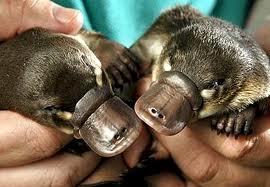
The nest material was kept damp, which makes certain that the eggs will be kept moist, for otherwise they might easily dry up. the egg hatched after being incubated for at least a week, perhaps ten days.
The youngster was very small at first, naked and with a short, fleshy beak. Baby duckbills do not eat for the first few days. Then, they begin to be nourished by the mother's milk. There are no nipples, but the babies suck milk from the hair covering the milk patches.
Jill had nothing to eat all the time she was keep the egg warm, but afterwards she had to eat a lot, more than half her weight each day.
The young duckbill grew rapidly, but it was seventeen weeks old before it ventured out into the open. At that age it was thirteen and a half inches long and weighed a pound. Thus, you have the story of the first known platypus born in captivity.
If You'd Like To Know More!
- Australian mammal, monotreme, Platypus, Duckbill - Aussie-Info.com
- Unique Australian Animals
Unique Australian Animals (Mammals, Marsupials, Reptiles, birds acquatic etc) Plenty of info and pics - Poisonous platypuses confirm convergent evolution : Nature News
Nature - the world's best science and medicine on your desktop - Poisonous platypuses confirm convergent evolution : Nature News
Nature - the world's best science and medicine on your desktop


